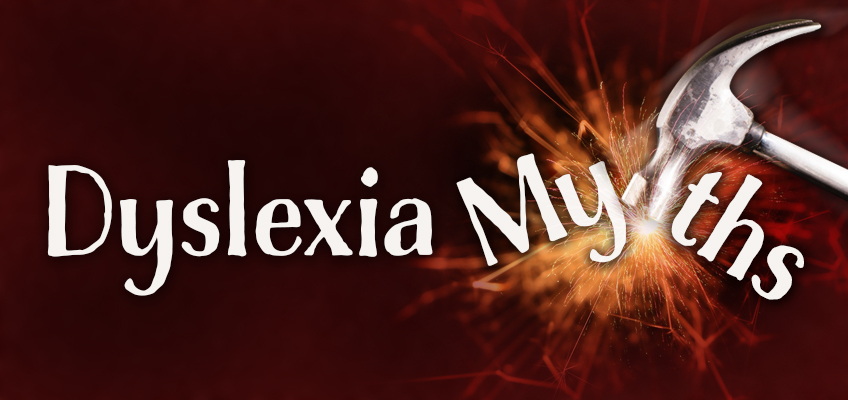For many, fall is synonymous with back-to-school activities and starting the new academic year on a strong note. It is also a time to raise awareness about dyslexia. Since the early 2000s, the International Dyslexia Association (IDA) has set aside the month of October to do just that. More recently in 2015, Congress voted to designate October as National Dyslexia Awareness Month.
According to the IDA, dyslexia is a “learning disability that is neurobiological in origin [and is] characterized by difficulties with accurate and/or fluent word recognition and by poor spelling and decoding abilities.” The Yale Center for Dyslexia and Creativity estimates that 15-20% of the world’s population displays characteristics of dyslexia.
Although dyslexia is common among individuals of all ages, misinformation about the learning disability is equally common. To set the record straight and celebrate National Dyslexia Awareness Month, we’re dispelling nine common myths.
MYTH #1: Only school-aged children develop dyslexia.
Because dyslexia is innate, characteristics can appear in children as young as two or three years old. Early signs for children under the age of five include delayed speech, difficulties remembering the alphabet, and mispronouncing common words.
MYTH #2: Dyslexia stems from vision problems.
You regularly hear that people with dyslexia see letters and words out of order, but this isn’t caused by vision issues. Dyslexia is a brain-based learning disability. In fact, scans have revealed that the brain of an individual with dyslexia functions differently when it comes to reading text than the brain of someone without the learning disability.
MYTH #3: Dyslexia disappears once a child learns how to read.
While people with dyslexia can become fluent, skilled readers, there is no cure. Individuals with dyslexia can achieve success both in school and in life with early intervention and proper science-based instruction.
MYTH #4: Dyslexia is linked to a person’s level of intelligence or motivation.
Dyslexia is often mistakenly attributed to a low level of intelligence or a lack of motivation. The truth is, students with dyslexia aren’t lazy and in some cases try even harder than their classmates to master reading. Individuals with dyslexia require additional support and multisensory structured learning to create lasting literacy skills.
MYTH #5: Dyslexia is caused by a lack of reading at home.
Since dyslexia is a neurobiological learning disability, individuals can’t develop it from limited reading in the home. However, a lack of reading practice at home can hinder the progress of adults learning to read. For children with dyslexia, parents can use creative ways to encourage reading outside of the classroom.
MYTH #6: Dyslexia is extremely rare.
It’s easy to dismiss the prevalence of dyslexia if you think the learning disability hasn’t impacted your life or the life of a loved one. More commonly, people can identify individuals in their lives that have struggled to learn to read and spell. It’s estimated that 70-80% of people with reading difficulties have dyslexia, ranging from mild to severe.
MYTH #7: Dyslexia is only present in English-speaking students.
Whether a child is fluent in Spanish, Chinese, or German, dyslexia affects children who speak all languages. Researchers have found that the neuroscience behind dyslexia is the same, regardless of a child’s native language.
MYTH #8: A lack of phonics instruction can cause dyslexia.
Although it is a critical component of reading, dyslexia is not caused by insufficient phonics instruction. Successful readers also require explicit instruction in phonemic awareness, fluency, vocabulary and comprehension. Offering children educational programs that promote these core components will create a foundation for higher-level reading skills.
MYTH #9: Boys are much more likely to have dyslexia than girls.
Although the exact percentage has fluctuated throughout the years, studies have shown that dyslexia affects both genders at a comparable rate. Despite these findings, teachers have been found to refer more boys for dyslexia evaluations.
While dyslexia affects every individual differently, students with dyslexia can successfully learn to read when provided with the proper tools and instruction. By dispelling common myths, we take another step toward developing the next generation of fluent, independent readers.

